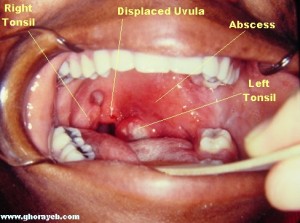I recently read this book, which is an overview of the Affordable Care Act (a.k.a. Obamacare), written by one of its principal architects. Dr. Ezekiel Emanuel is the brother of Pres. Obama’s former chief of staff Rahm Emanuel. He was an important advisor to the President during the process of writing and passing the health reform law. He is currently the Vice Provost at the University of Pennsylvania School of Medicine.
Here is a (fairly) brief overview of this book. There are 3 sections. The first section discusses the history of the US health care system prior to Obamacare, the details of how people get care and how hospitals and doctors get paid, and the main problems with the system.
The second section discusses the history of health reform efforts since the founding of the country, the process of writing and passing the ACA, the Supreme Court case upholding the law, a detailed description of what’s in the law, and finally a description of how the law will affect patients, doctors, and insurance companies.
The third section discusses the problems with the launch of healthcare.gov, gives benchmarks on how to measure whether the law is successful or not in the future, possible improvements to the law, and predictions for the future.
I think there are a lot of strengths to this book. First, Dr. Emanuel is a good writer with a clear style. He does a great job of summarizing and simplifying what are extremely complicated subjects (the American health care system and the ACA). This could easily be a very dry book but it is not.
This leads me into another strength: the book is an excellent resource for anyone who wants to understand how our health system functions. Even as a doctor (and a doctor who is interested in these topics), I learned a lot of details from this book that I did not know before. Dr. Emanuel talks about how the health insurance system works, how doctors bill for services and get paid, and the effects of government regulation on the system.
The third big strength of this book is a comprehensive summary of what exactly is in the Affordable Care Act (hint: there’s a lot more than you think!). The law is certainly controversial, and I believe that reasonable people can disagree about it. However, there is a LOT of misinformation out there coming from the media, talk radio, politicians, and other sources. I think it is important for people to understand what is actually in the law before they decide to support or oppose it, and I think this book does a good job of describing what is in the ACA.
Shortly after Obamacare was passed in 2010, I gave a lecture to my department in residency about the law. It was difficult to find reliable information that gave a full overview of the law at that time. This book is a much better source than anything I found 4 years ago.
Now, on to the weaknesses of the book. First and most obviously, the book is skewed toward a positive impression of the ACA. The book is written by a strong supporter and drafter of the Affordable Care Act. So, the author is clearly biased to take a very positive view of the law and its potential future effects. There is very little discussion of possible ways the law could have negative effects or cause unintended problems. I would like to see a similar book written by a (reasonable) opponent of the law or at least an objective writer who gives both sides of the argument.
Dr. Emanuel makes a series of predictions about the future effects of the law toward the end of the book, but he wisely gives the disclaimer that he is only making educated guesses.
Dr. Emanuel also (in my opinion) makes light of how easy it will be to implement the vast structural changes in health care technology, how doctors and hospitals get paid, and many other features of the health care law.
He suffers quite a lot from “Ivory tower syndrome,” meaning that he has spent his entire career in academia and public policy and thus does not fully understand the situation of most doctors in private practice. Sweeping pronouncements like “A private practice will probably need 10 or more physicians to have sufficient scale- financial resources, physician time and attention, and staff- to support the experimentation that will be part of the necessary transformation in care” are frequent throughout the book. Right or wrong, there is going to be a lot of resistance by doctors to these kinds of mandates if they are not made with understanding to our situation.
In summary, Reinventing American Health Care is an interesting, informative read, but take its predictions and rosy outlook with a grain of salt. I would encourage my readers to check it out. Link to Amazon for anyone who is interested in reading it.

